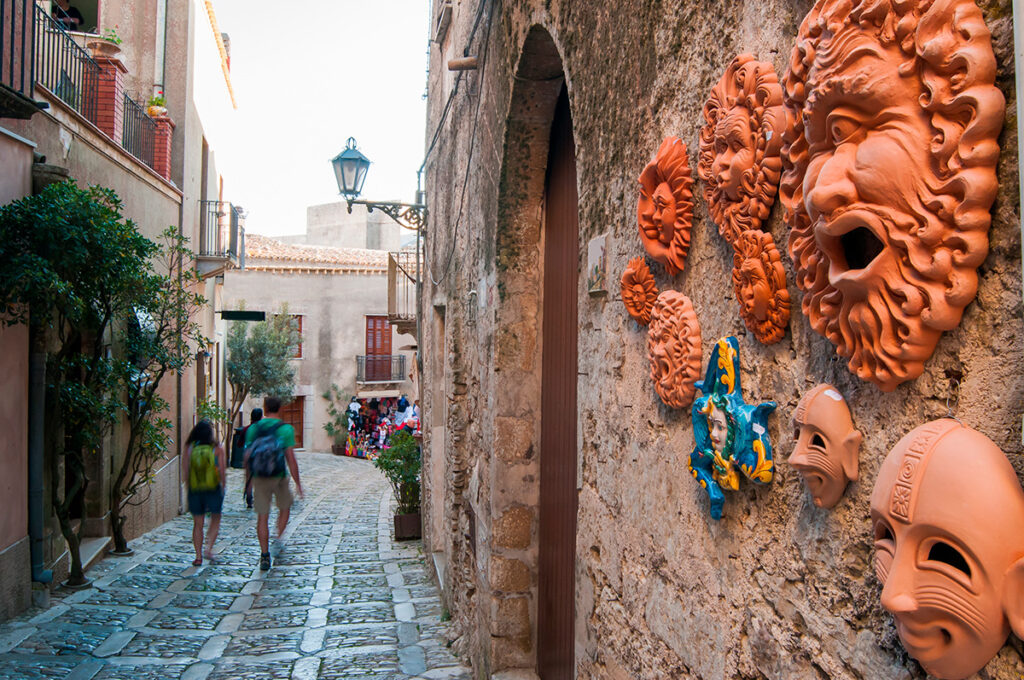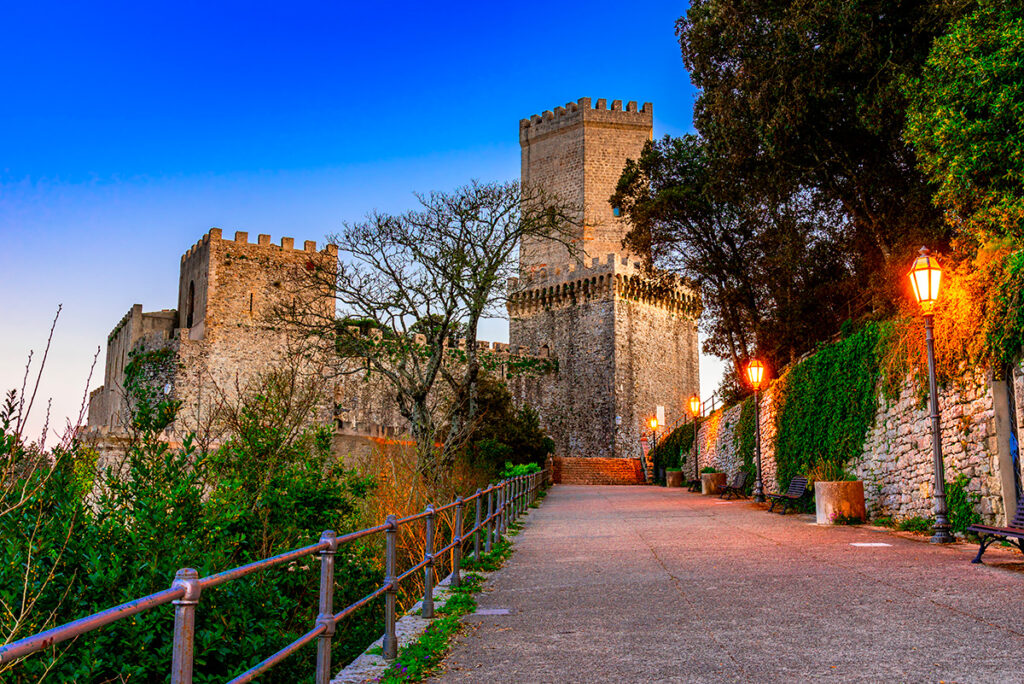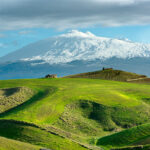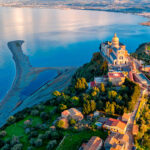Walking in the medieval village nicknamed “the city of a hundred churches” will take you back in time
Sicily offers tourists places to travel through time and history, among enchanting landscapes and breathtaking views. Among these places, a place of honor is reserved for Erice, a small medieval village located above the city of Trapani, from which it is connected both by a road and by a cable car which, starting from the provincial capital, takes you to the top of the mountain, showing more and more the panorama of the gulf and the Trapani salt pans.
The history of Erice is very ancient: it seems to have been founded in the eighth century BC by the Elymians, the people born from the union of the local populations with the exiles from the city of Troy. Later disputed by the Carthaginians and Syracusans, it became a stronghold of the former, who strengthened the city walls. It was then the Romans who conquered it in 244 BC, making it known for the themenos, the sanctuary dedicated to the goddess Venus Ericina. In the Middle Ages it was taken first by the Arabs and then by the Normans, who built the castle and built churches and convents. If today the village is nicknamed “the city of a hundred churches” it is thanks to them.
With such an ancient history, it is not surprising that Erice was included by Virgil in the Aeneid. Aeneas arrives there twice: the first on the death of his father Anchises and the second a year later, for the celebration of funeral games in his honor. The name Erice seems to derive from the character of the same name in Greek mythology, son of the goddess Aphrodite and the Argonaut Bute, who was killed by Heracles.
You enter the village from Porta Trapani, built in medieval times, and you immediately arrive in Piazza Matrice, where the Cathedral of Erice, the Royal Chiesa Madrice Insigne Collegiata, is located. The church was built in the fourth century A.D. but it was enlarged and modified in the fourteenth century by Federico of Aragon, who wanted to make this gift to the city that had hosted him after he had been forced to flee from Palermo during the War of the Vespers. For the construction of the cathedral, material that came from the ancient temple of Venus was also used, evidence of which can still be found today on the south wall, where nine stone tiles in the shape of a cross are visible. The exterior is austere while inside you can see the splendid stucco decoration of the vaults and the Corinthian columns. The rose window and pronaos were added later.
Next to the cathedral there is the Bell Tower, known as King Federico’s Tower. It was a watchtower which, with the works commissioned by Federico of Aragon, was transformed into a bell tower. By climbing the approximately one hundred steps you can enjoy a spectacular view of the entire village.
Among the major points of interest in Erice is the Castle of Venus, to which we have dedicated a separate box.
Under the castle there is the Pepoli Tower, built at the end of the 1800s by Count Agostino Pepoli as a place to dedicate himself to his studies and cultural meetings. The building is in Liberty style. Renovated by the Municipality, it is now home to the Observatory for Peace in the Mediterranean. From the turret and the nearby Giardini del Balio, English gardens also wanted by Count Pepoli where the watchtowers of the same name are located, you can enjoy an incredible view: to the north you can observe the gulf with Mount Cofano with, in the background, San Vito Lo Capo and the Zingaro Reserve; to the south you can see embrace Trapani and its salt pans, the Stagnone lagoon and also Marsala, as well as, further offshore, the Egadi Islands. The Balio Towers and the garden were once connected to the castle by a drawbridge.

The “city of a hundred churches” has, of course, many ecclesiastical buildings of considerable interest. A few steps from the Cathedral there are the ruins of the Santissimo Salvatore Monastery, with the crypt and the garden as well as the respective church. The Church of Sant’Alberto dei Bianchi contains the statue of the saint attributed to Nicolò Travaglia. Initially built in Gothic style and then renovated with a portal decorated in Baroque style, it is the Church of San Martino, where inside you can see the wooden choir and elegant stuccoes and frescoes. The Church of San Giuliano was built at the behest of Ruggero d’Altavilla in 1076 as thanks for his victory against the Saracens. The first seat of the cathedral of Erice was the Church of San Cataldo, built in the fourteenth century: inside the marble stoup with the Aragon coat of arms dates back to 1476. Outside the Church of San Carlo and its monastery you can find a wheel that the nuns used to deliver pastries to customers. Inside there is still the original majolica floor. The Church of Sant’Orsola, known as the Addolorata, which is located near the Porta Spada, is in Gothic-Renaissance style.
There is no shortage of important civil buildings. In Piazza Umberto I there is the Town Hall with, inside, the Municipal Library and the Antonino Cordici Civic Museum, where you can observe a small head of Venus dating back to the fourth century BC, as well as finds from the Punic, Greek and Roman periods. The Ancient Cyclopean Walls, the ancient defensive walls dating back to the Elymo-Phoenician (lower ones) and Norman (upper ones) era, are partly accessible. In the Spanish Quarter, off-center from the historic center, there is an unfinished fortress dating back to the seventeenth century. Restored in 2005, it is now home to the Museum of Ancient Crafts. Even from here you can enjoy an incredible view that goes from the Gulf of Bonagia to San Vito Lo Capo, with Monte Cofano in the foreground.
Finalist of the Most Beautiful Villages in Italy competition in 2022, Erice is a small jewel that can be visited in less than a day that will make you feel suspended in time, immersing you in streets, gardens and churches with a medieval flavor, illuminating your eyes with incredible views and making you savor the sweetness of historic Sicilian pastry shop. Don’t miss this wonder.





Comments are closed.